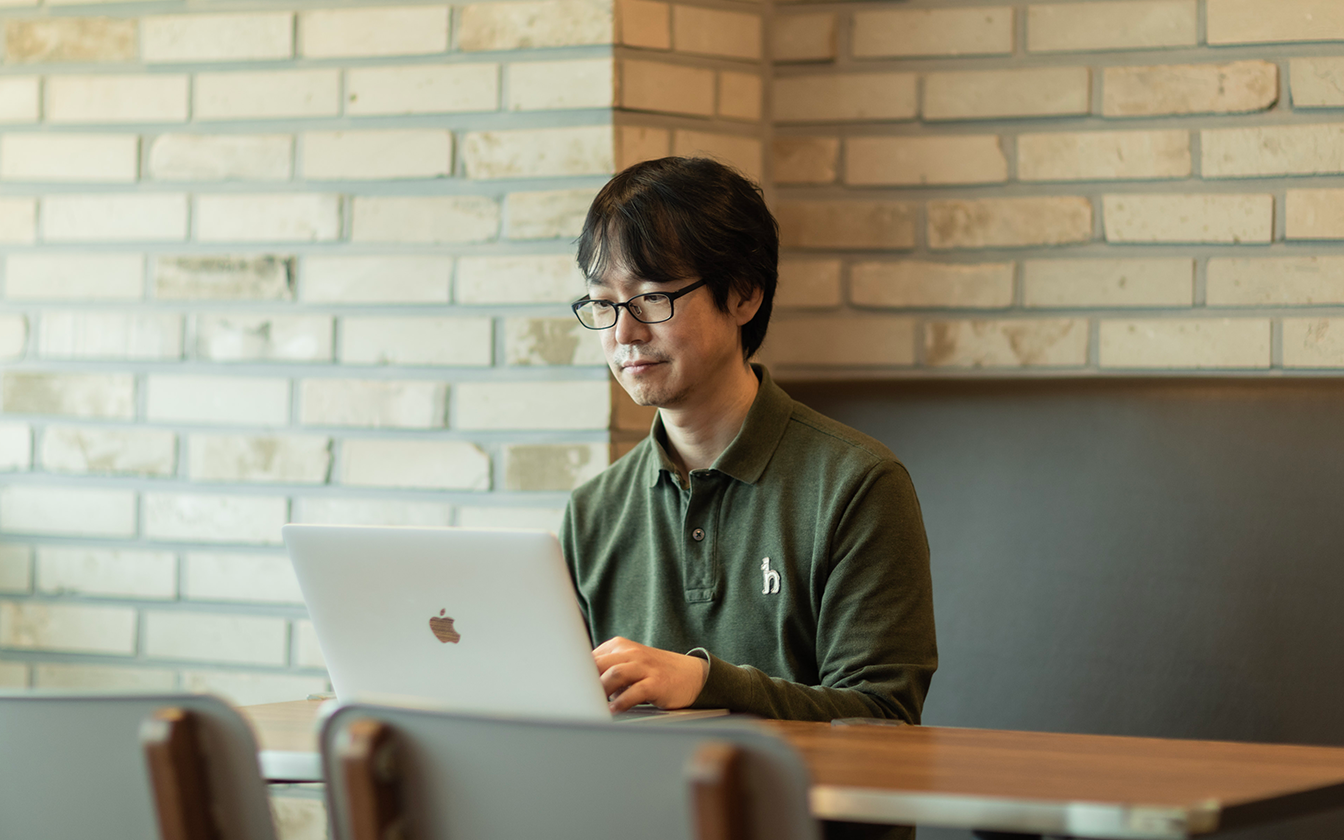Support Communication with User-First Mentality
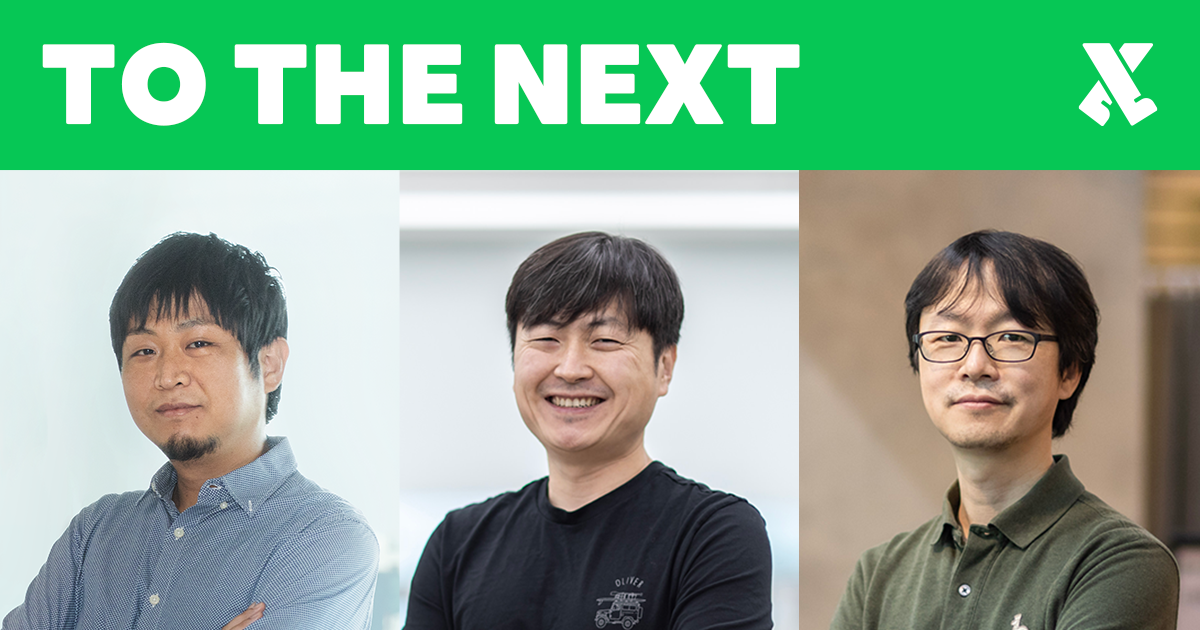
LINE celebrates its 10th anniversary on June 23, 2021. In this series of interviews, we sat down with twelve Global LINERs and asked them to look back on the last ten years since LINE was established. They also shared their visions for the next ten years, including how they wanted to change society.
In this article, we introduce three LINERs who support people's communication from a user-first perspective.
The responsibility of supporting users' communication
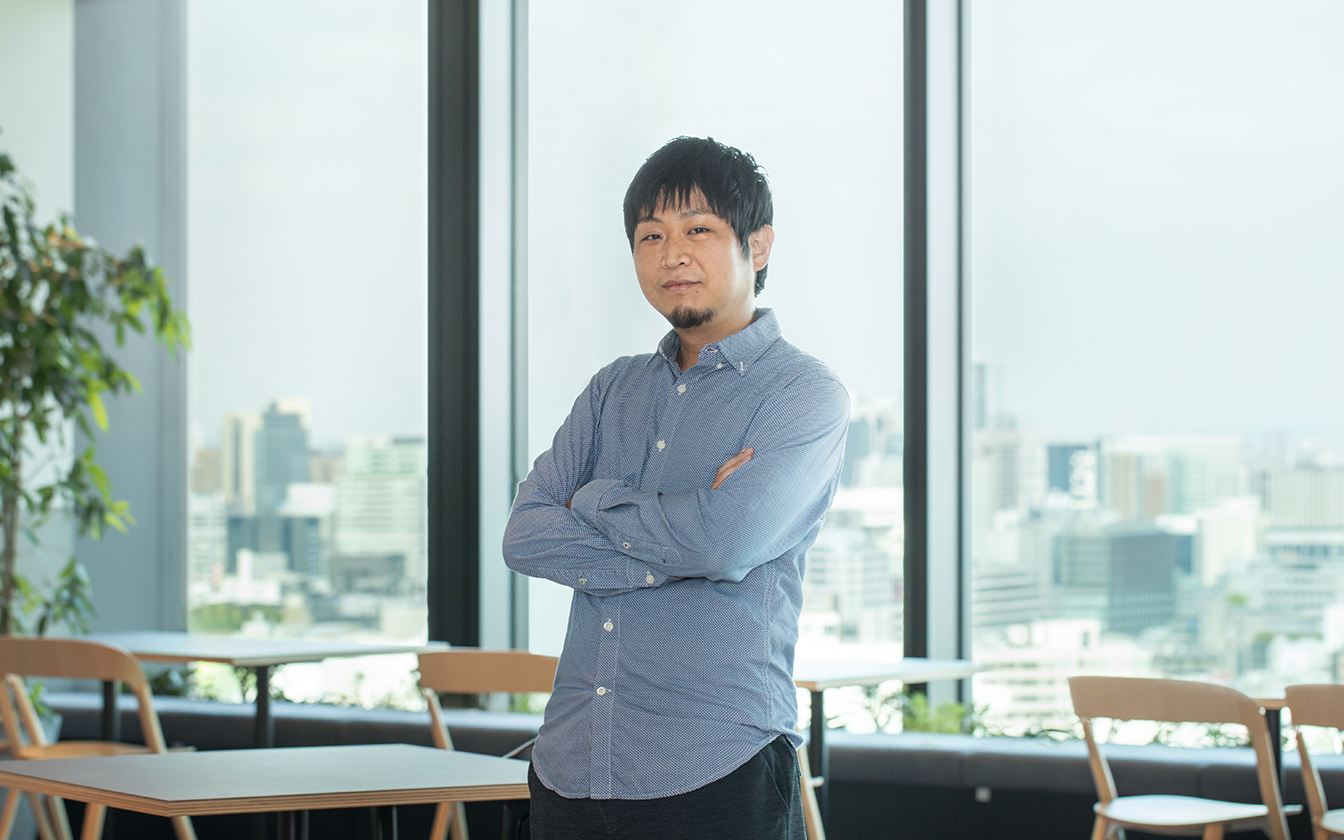
- Irie Kazutaka
- Kazutaka is part of the LINE Planning Center. He joined LINE in 2014 after working for Panasonic MSE (currently known as NTT DATA MSE) and GREE. He is involved in planning and developing the LINE communication app, and became an executive officer in 2019. His hobby is watching soccer games. As he can only watch on TV now, he's waiting for the day he can cheer on his team at the stadium again.
ーーLINE was established ten years ago from around this time on June 23, 2011. What were you doing at that point in your life?
Kazutaka
Ten years ago, I was engaged in setting up an Android smartphone project for a manufacturer. Before that, I worked on developing feature phones for a long time, so I witnessed Japan's mobile phone market shifting rapidly towards smartphones. I also learned about LINE through a TV commercial around this time.
After working for the manufacturer, I worked for an operator of social-network games where I planned and developed its social media channels. While working there, I saw numerous companies developing messaging apps like LINE, so I felt that chat would be the main method of communication in the future. I saw a big potential in social media-based service platforms, and decided to join LINE as I thought it was where I could take on more challenges.
The most unforgettable project I've worked on at LINE so far is preventing unauthorized logins, which I was in charge of as soon as I joined the company. Through the project, I learned that hard and tedious work behind the scenes of visible improvements to services was also essential in providing peace of mind to our 190M monthly active users around the world.
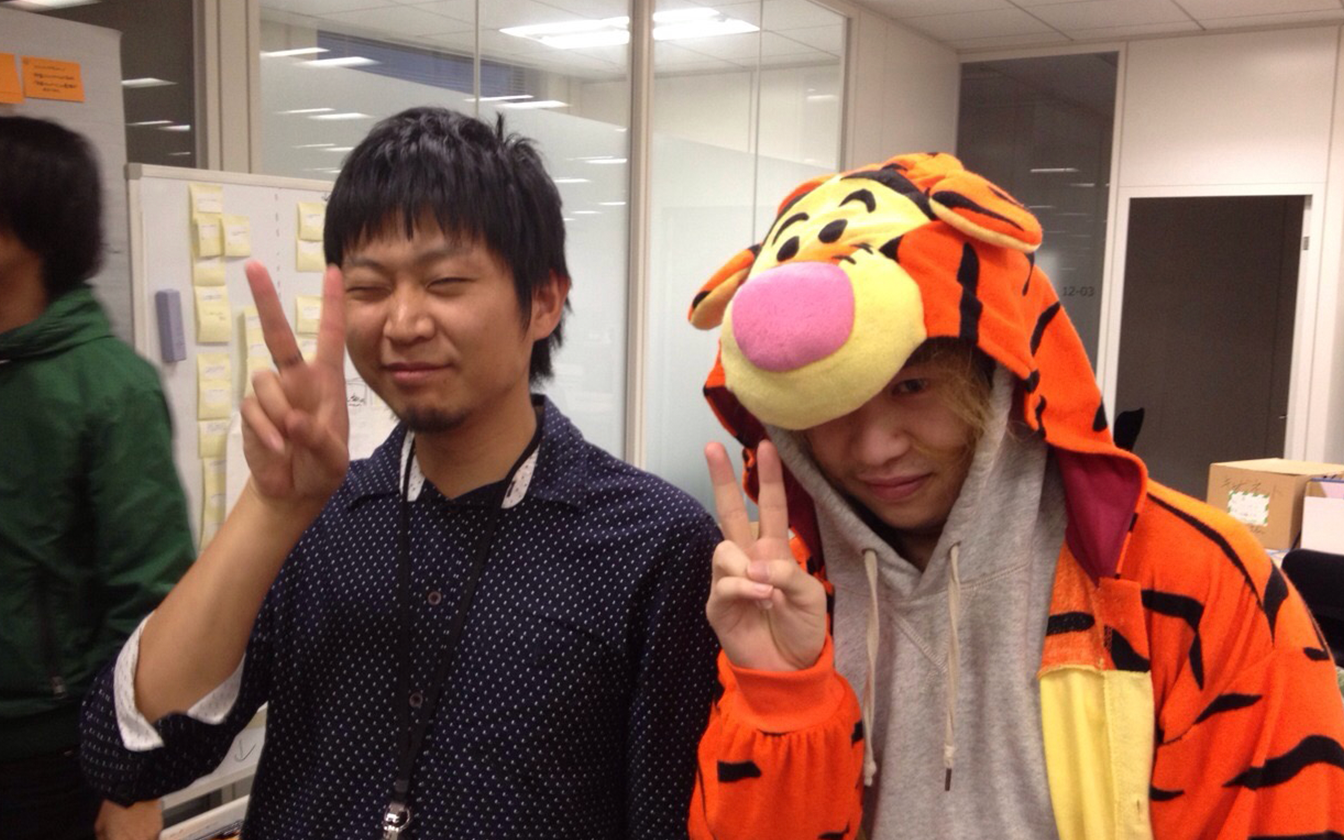
Kazutaka 10 years ago.
ーーWhat do you think are LINE's strengths and what issues do you think it still needs to tackle?
Kazutaka
LINE's video call lets users talk to their families and friends who they haven't been able to meet for a long time due to the pandemic. I believe this is LINE's strength. At the same time, I feel the responsibility and pressure of supporting people's communication.
On the other hand, even though we offer various services and features, I feel like we aren't clearly telling our users what these features are, what's good about them, and how they can used in different situations.
From now on, rather than just say that users can do anything on LINE, we should provide our users with an experience where they can naturally find what they need for their daily lives on the app.
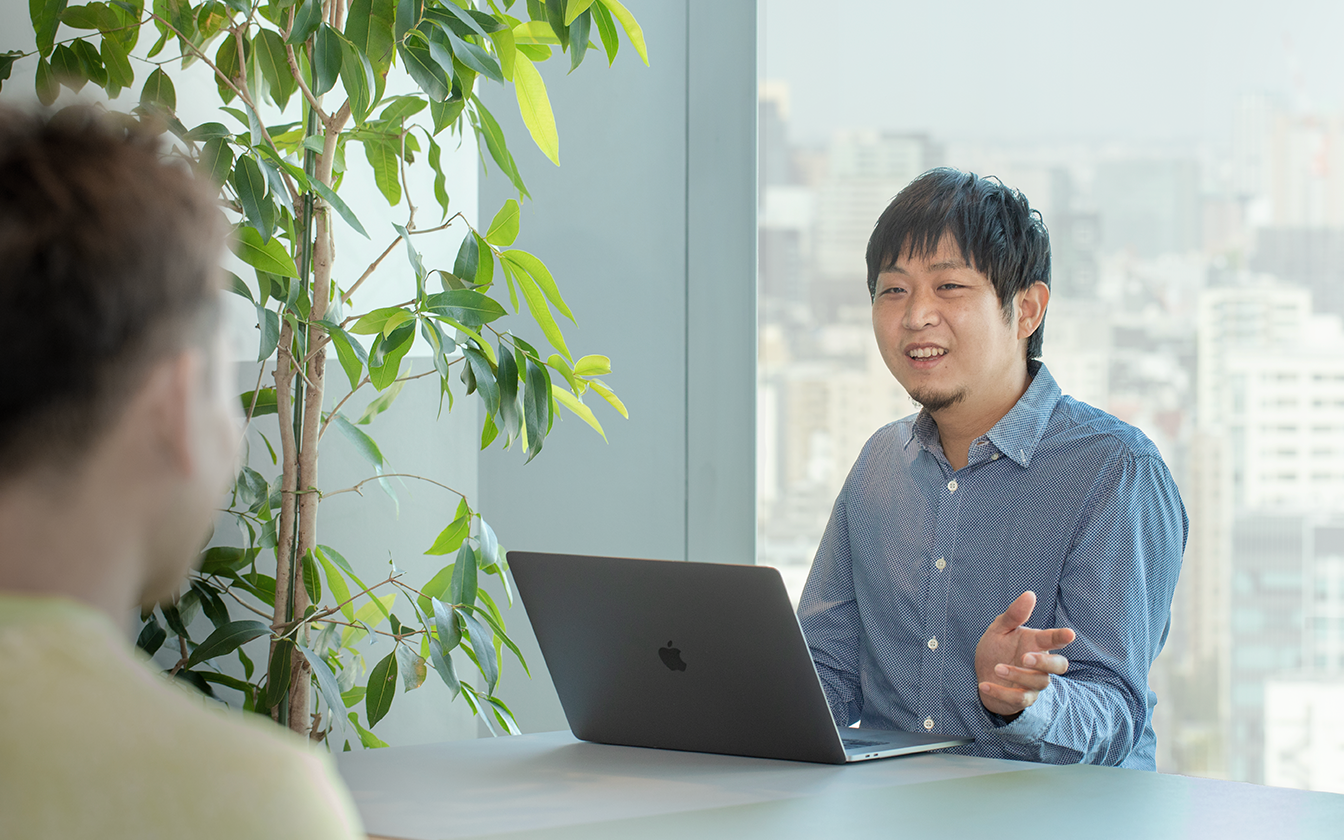
ーーWhat do you want to achieve next at LINE?
Kazutaka
"If we create something that's really good for our users, we'll naturally see an increase in sales"--this is the user-first perspective that LINERs have when they create products. I still remember the culture shock when I joined LINE and learned about its values, because they are completely different from the ones that my other companies had. I'll do all I can to address issues, think of solutions, and give a clear direction as to where LINE should head as a product so that we can make more people happy about using LINE.
I'll also maximize the capabilities of team members who are building LINE with me in planning and development, and will create an environment where they can take on challenges.
An engineer who travelled the world to understand user needs
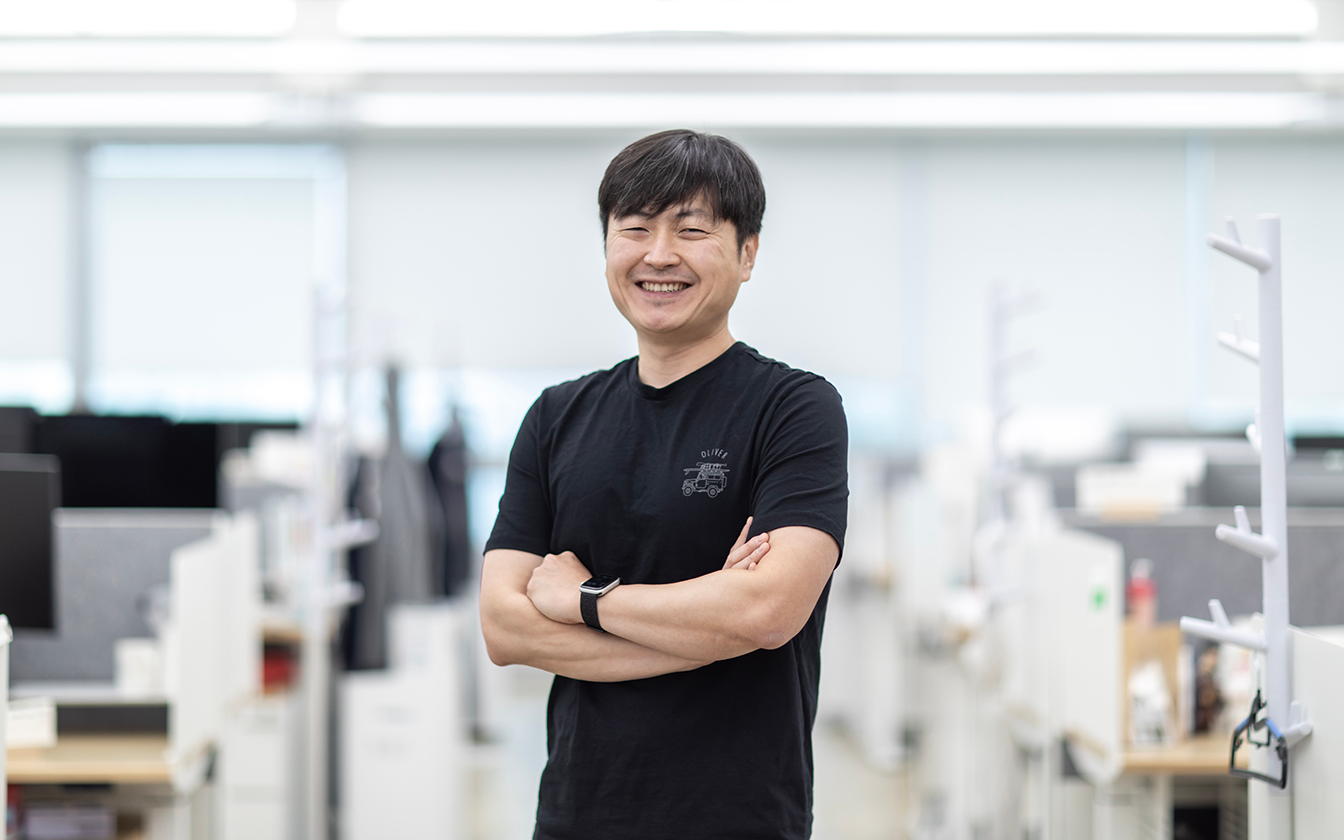
- Kim Byeongchan
- Byeongchan is a member of the LINE Plus Service Engineering team. After working as an infrastructure engineer for Naver Business Platform (NBP), he joined LINE Plus in 2013. Since then, he has been in charge of service engineering to maintain the safety and reliability of the LINE communication app. His hobbies are scuba diving and running. Every morning, he makes sure to go for a run to clear his head.
ーーWhat were you doing ten years ago?
Byeongchan
Ten years ago, I was working as an infrastructure engineer. I mainly searched for and troubleshooted the causes of system failures. During that time, I had opportunities to do work that involved LINE's infrastructure. So I started to gradually think that I'd like to try handling all of LINE's services and not just infrastructure, and that's when I decided to join the company.
The thing that left the biggest impression on me over these last ten years was a project called the LINE Fellowship, which started in 2013 and continued for a few years. LINE engineers and developers traveled directly around the world to places like Europe, America, and Southeast Asia to test the local networks and the LINE app's usability in different countries. We reduced the amount of data so that users in countries and regions with less stable networks could send and receive messages without issue, added more features, and did many other things to optimize the service based on the country/region. We also asked local users about any inconveniences they felt while using LINE and what features they wanted.
Being able to see how networks have evolved first-hand was also an invaluable experience. For example, when I first visited Thailand, networks were quite slow. It took a long time to send one photo on a smartphone. But by my third visit, the network connection was fast enough for me to stream a video while en route from the airport to my accommodation. It was experiences like this where I was surprised at how much infrastructure could advance. As a developer, it was really great to experience the actual environments in which our users were utilizing LINE.
When LINE first launched, I was a little worried about how many people would use it, but it spread all over the world in a flash. And now, it's become such a standard part of people's daily lives. I think that closing the distance between people like this is LINE's greatest achievement in the last ten years.
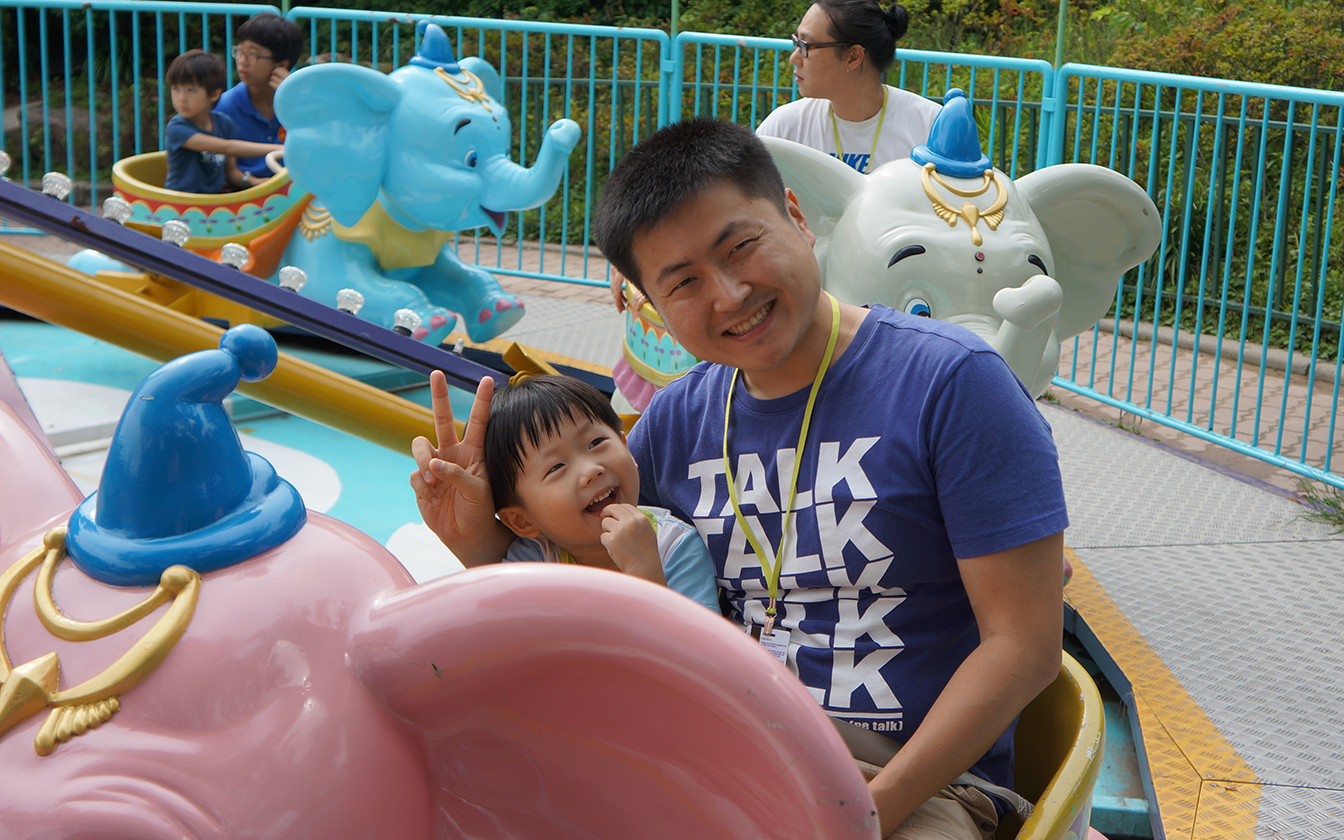
Beyoungchan 10 years ago, with his child at the amusement park.
ーーWhat do you think are LINE's strengths and what issues do you think it still needs to tackle?
Byeongchan
I think LINE's strengths are a development culture focused on improving services and colleagues who always support your endeavors. When there's a server failure or some other issue for example, we don't look for who is to blame. We look for the causes, have constructive discussions on how to resolve it and prevent it from happening again, and then take action quickly. On top of this, we have a culture of accumulating this knowledge so that we can utilize it again in future. Also, colleagues around you will support any efforts you make to try and improve the status quo. That's why I think everyone is able to work together and do all they can to develop even better services. Having colleagues like this is really encouraging.
Up until now, LINE has connected people by making it easy for users to message each other for free. I feel like we'll need to expand on that in future--removing the lines between text and speech for example. So what I mean is, I think communication could become even more diverse if speech could be easily converted into text data, or if users could listen to messages being read out loud. If we utilize AI technologies, I think that a future in which users think of these services as the norm would not be far off.
I dream of ultimately erasing the boundaries between countries and languages with LINE and making the world a happier place.
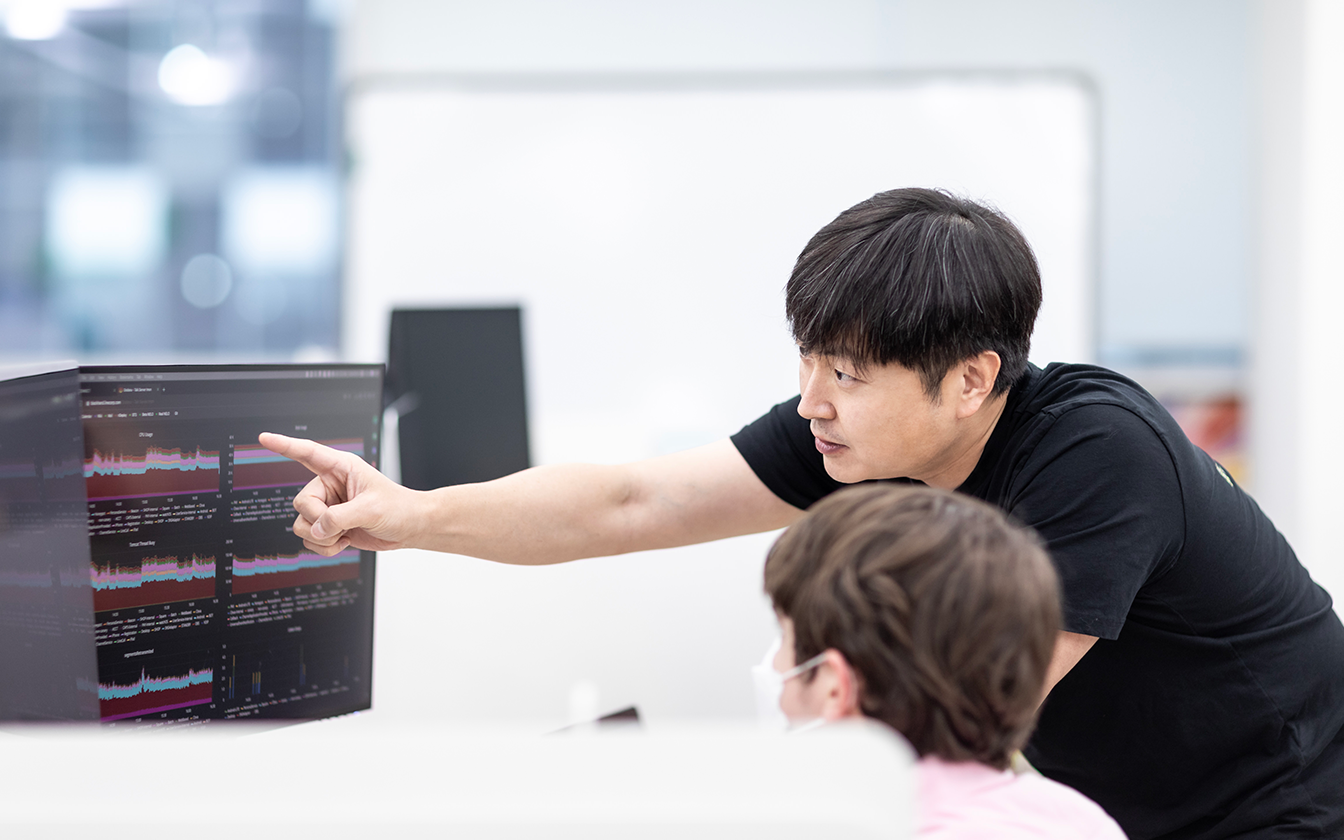
ーーWhat do you want to achieve next at LINE?
Byeongchan
I want to continue making services that users all over the world will love and feel happy with. After visiting different countries with the LINE Fellowship and experiencing each unique environment for myself, I feel it's my mission to understand user needs and create higher quality services. I worked hard on service improvements during the project, so from now on as well, I believe I should continue to make great services that will delight even more users.
On a more personal note, I wish to welcome the New Year on a tropical island. Every year, I've been tasked with handling the large amounts of New Year traffic on LINE from users around the world sending "Happy New Year" messages. So I haven't been able to take it easy during New Years for a while now (laughs). One day, I'd like to not worry about LINE traffic, and see in the New Year while relaxing and drifting along the waves on a tropical island.
LINE is a place where you can do your very best to create worthwhile services with colleagues. Over the next ten years, I want to make it an even greater place and continue working with everyone to offer services that will benefit users.
Using data to identify changing user needs and achieve Life on LINE
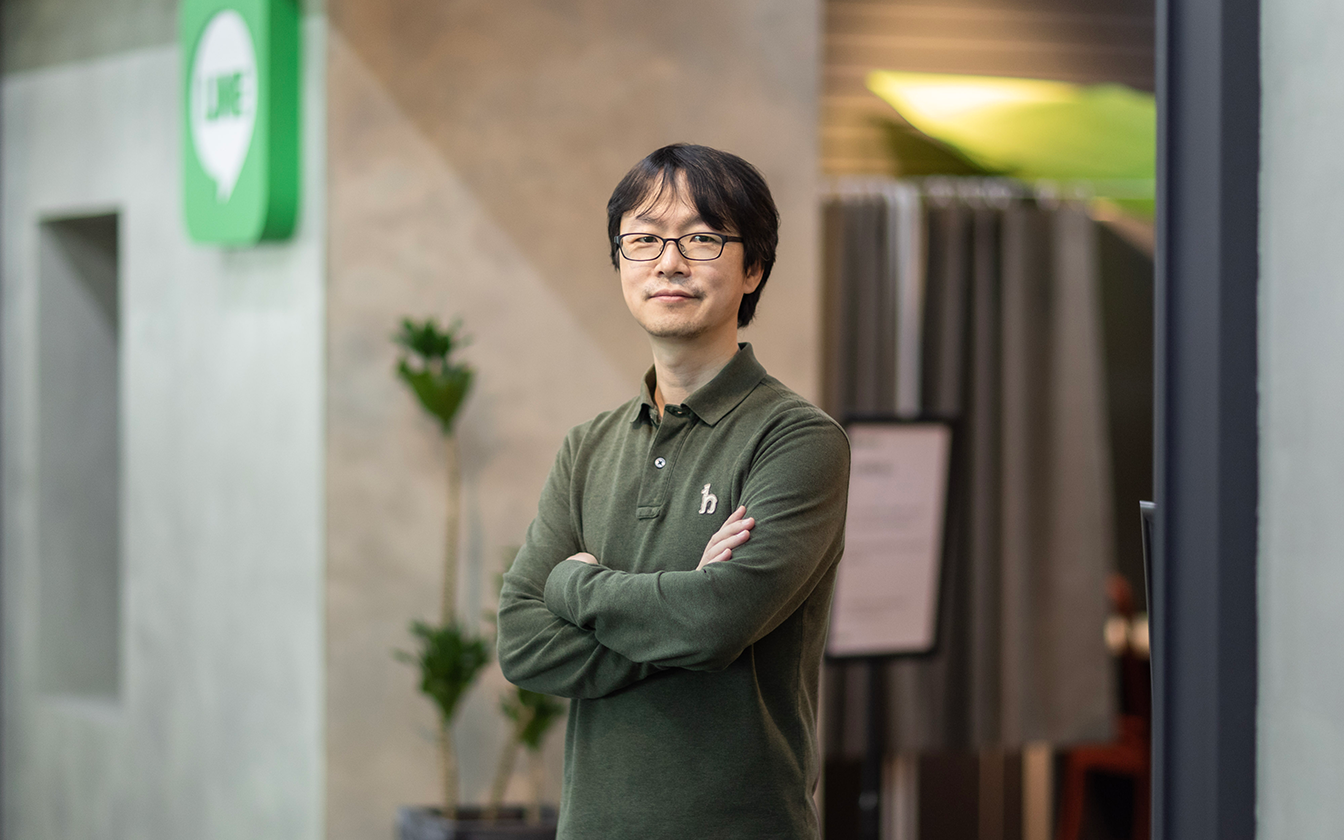
- Kim Namil
- Namil is part of the LINE Plus Messaging Data Engineering team. After working at NAVER, he joined LINE Plus in 2013. He develops and operates the back-end server that supports the sending and receiving function of LINE messages. Namil currently analyzes data to identify user needs and leads the system development team.
ーーWhat were you doing ten years ago?
Namil
Ten years ago, I was working at NAVER. I joined LINE Plus because I wanted to work in an environment where I can develop and operate large-scale systems which I was interested in.
LINE was a simple app at that time: messaging was the only feature it had. However, the app is now used for services like food delivery and payment, and it has a highly public role in collaboration with central and local governments. As someone who's seen LINE from the beginning, I'm amazed at how much it has grown. The app also offers features that meet user needs during the pandemic, including virtual backgrounds for online meetings and avatars, making us one step closer to achieving our vision of Life on LINE.
Since I joined the company, I believe my life has changed drastically. One of the biggest changes I've experienced is using the LINE app for work. Thanks to the app, I've been able to communicate with colleagues faster and get work done more smoothly.
I also started to think about users in my private life after seeing many people in Japan use the app when I visited there many years ago (around 2013). Knowing that a lot of people use the service I developed was surreal. I couldn't stop worrying about whether the app was sending messages properly or whether it was causing inconvenience to users. I still remember the excitement I felt at that time.
ーーWhat do you think are LINE's strengths and what issues do you think it still needs to tackle?
Namil
One of LINE's strengths is that it has outstanding members who come from diverse backgrounds. LINE's development department places collaboration at the core of its activities--business, front-end, back-end, infrastructure, and various other departments work together to develop one feature. We often work with overseas members as well. Our language and culture may be different, but we are passionate about achieving one goal: to build better systems for LINE. The people I work with are LINE's biggest asset.
The engineering knowledge we've gained over the past ten years is another valuable asset of ours. When operating services, system failures can occur even if you follow a carefully planned process. At LINE's development department, we always hold a review meeting after a system failure to clarify the root cause and measures. We also provide different perspectives on methods to prevent similar failures from occurring. Doing this consistently for ten years, we have improved the process of preventing system failures, making the LINE app more stable than it was ten years ago. Going forward, I'd like to make further improvements to the app.
As for the challenges, I'd like to raise two issues. Since LINE is a global company that offers services around the world, mainly in Asia, engineers from various countries and regions are required to work together to create a service. We cannot maintain the consistent quality of services and features and satisfy users of all markets unless development centers communicate with each other effectively. Working with members who have different backgrounds and speak different languages from you is not easy, but development centers can enhance the quality of services if they communicate more closely with one another.
From a user's perspective, I also think that LINE's chat room is a little bit complicated. Many people use the app for communication at work, not just chatting with friends, and official accounts for various services are increasing. So, our next challenge is to provide simple and more convenient features to meet user needs, such as letting users personalize their chat rooms.
ーーWhat do you want to achieve next at LINE?
Namil
It's hard to predict the future in an ever-changing world (laughs). But as an engineer, I'm interested in solving various problems at work and I hope that my achievements will benefit our users' daily lives. Therefore, I will continue striving to stay ahead of constant changes and understand user needs.
